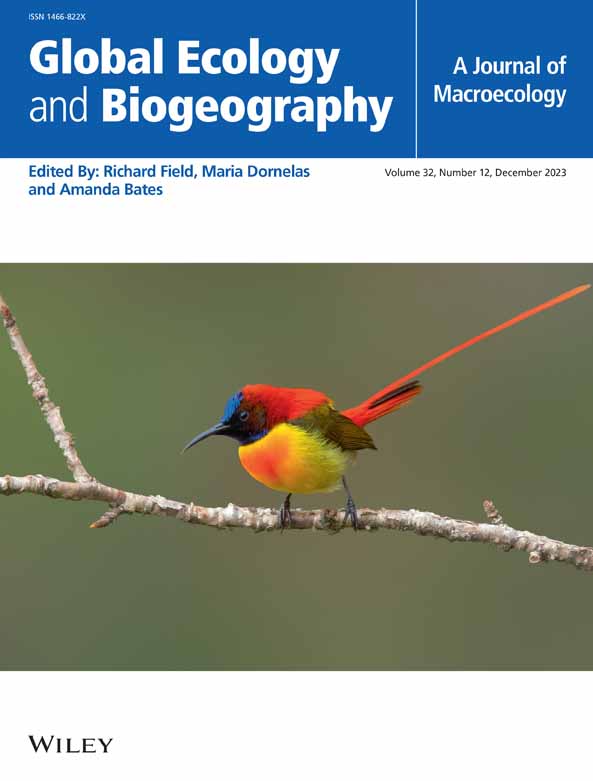High-Quality Human Activity Intensity Maps in China From 2000 to 2020
Abstract
Aim
Human activity intensity (HAI) is a crucial metric for quantifying human impacts on ecosystems. It is essential for studying humans' role in macro-ecological processes such as habitat connectivity, ecosystem change and biodiversity loss. However, the lack of high-quality HAI datasets in China has hindered related research. Our goals were to develop an improved method for national HAI mapping and to present a comprehensive HAI assessment in China from 2000 to 2020.
Location
China.
Time Period
2000–2020.
Major Taxa Studied
Terrestrial ecosystem.
Methods
We developed an improved HAI mapping methodology by introducing a comprehensive eight-indicator system covering socio-economic, natural environment and resources dimensions, more rigorous scoring models (e.g., travel time calculation) and a principal component analysis-based indicator overlaying method. China's first spatiotemporally consistent HAI maps from 2000 to 2020 were produced by applying this methodology and using higher temporal resolution and more reliable data than those used in global research.
Results
Our HAI dataset demonstrated significantly improved accuracy, with an overall root mean square error (RMSE) of 0.085; 34% lower than that of the global human footprint product (RMSE = 0.125). Additionally, it outperformed in challenging landscapes, such as rugged terrains, arid regions and natural-human transition zones. The results show between 2000 and 2015, over 620,000 km2 of areas with very low human activity (HAI < 0.5) disappeared, resulting in the fragmentation of natural habitats, particularly in forest ecosystems and grassland ecosystems.
Main Conclusions
We developed a national-scale HAI mapping method framework, by which high-quality HAI datasets for China were produced. Thanks to our HAI product, we revealed details that cannot be reflected in global datasets (e.g., grazing ban) and provided critical insights into the spatiotemporal dynamics of human impacts on ecosystems in China. This methodology offers global relevance as a reference model, facilitating human-nature relationship research in other countries.


 求助内容:
求助内容: 应助结果提醒方式:
应助结果提醒方式:


